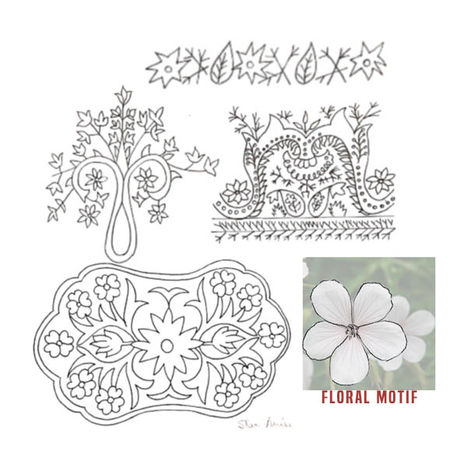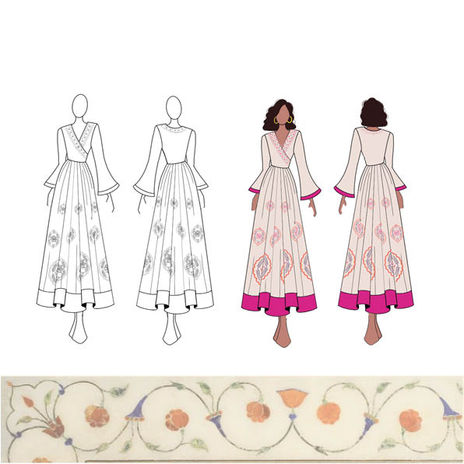THE CRAFT PROJECT

GLISTENING EMBROIDERIES OF KUTCH

The Kutch embroidery is a signature art tradition of the tribal community of the Kutch district in Gujarat. This embroidery with its rich design has made a notable contribution to Indian embroidery traditions.
The embroidery is practiced normally by the women of the community. In Kutch most women in their leisure time embroider. In old days they had no idea of the value of their skills nor did they have any concept of selling what they made. When repeated drought-hit Kutch in the late 1970s the people during that time had no source of income. This is when they started selling their handcrafted textile pieces. Due to this women became equal earners in the household, and received high respect in the family as they were the sole income earners of the family. A revolution took place in which women while quietly continuing their household chores found their status in society.
Traditional houses in Kutch were made with locally available materials- mud, wood, which blended in the stark landscape. The women of Kutch then found a way to revive the starkness around them and decorated their houses with brightly coloured door hangings and toran. The beams and rafters are also ornamented with pieces of mirror.
PROCESS
- Visualisation of the design with a pencil or chalk.
- These are then transferred onto graph paper, which enabled its scaling and standardizing.
- The next stage is the preparation of a stencil that is created by using a needle.
- The design is then transferred to the fabric using a non-permanent medium such as zinc oxide.
- Bright colours are then used to embellish the fabric and make it more attractive. Bright colours like red, yellow, orange, and green are used. Sometimes, black colour is also used for detailing.


I chose to use spices as my element as I wanted to use the intangible
sense of smell as my inspiration to create my motifs. Being a south Indian
I was very drawn towards various scents of spices as it was a very essential
part of our everyday lives at the household. During my childhood we used
to visit our hometown where I would go with my grandparents towards the
country side where I would get to experience various scents like the scent
of the wet soil, spices being ground, fresh jaggery being produced etc.
this fascinated me and every time I sense a scent that was familiar I was
taken back to the memory of when I first experienced it.
FORM STUDY




THE INTRINSIC KASHIDA WORK

Kashida, also known as Kashida, is one of the oldest forms of embroidery
that originated in Jammu and Kashmir. Kashida embroidery is created by
using thick coloured threads as well as beads to create different patterns.
Most kashida motifs that are used to create this form of embroidery
include images inspired by nature such as vines, birds, leaves and flowers
and this is one of the defining aspects of this form of embroidery.
Created with a type of a chain stitch, this embroidery is used on warmer
fabrics such as silk, cotton, and wool and on garments as well as home
decoration items such as rugs, cushion covers, and bedspreads .There is more
than one type of embroidery that can be carried out to create different
looks.
The practise of Kashida embroidery began in the early 11th century at the
small cottage level, however, over the years, it grew and expanded with
the Mughal nobility taking over the princely states. The aristocracy and
royalty further pushed the precious Kashida embroidery to become one of
most elite forms of embroidery. In the wake of growth and development,
Kashmiri craftsmen started to experiment in clothing and garments by
stitching unique salwar kameez, which is a staple for Kashmiri women.
The most interesting feature of this embroidery is that it only requires
maximum two or three stitches to produce elaborate exclusive designs. It
can be of different types like chain stitch, satin stitch, slanted darn stitch,
herringbone stitch and the stem stitch. The base of the fabric which is
generally used is either silk or wool or cotton, however, since wool is
commonly found in this region, it is preferably used. Pashmina, which
is the finest, lightest and most expensive wools in the world is exported
in large quantities from Kashmir. Pashmina employs the beautiful art of
Kashida embroidery and hence it is considered to be one of the most
coveted items in this region.






Visual board
























